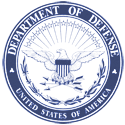Superseded
This policy memo has been superseded by the 2003 SAMM Rewrite.
 | DEFENSE SECURITY COOPERATION AGENCY | 10/9/1998 |
MEMORANDUM FOR :
DEPUTY UNDER SECRETARY OF THE ARMY
(INTERNATIONAL AFFAIRS)
DEPARTMENT OF THE ARMY
DIRECTOR, NAVY INTERNATIONAL
PROGRAMS (IPO O2C)
DEPARTMENT OF THE NAVY
DEPUTY UNDER SECRETARY
(INTERNATIONAL AFFAIRS)
DEPARTMENT OF THE AIR FORCE
SUBJECT :
Defense Security Assistance Management Systems (DSAMS) Development
The Defense Security Assistance Management System (DSAMS) is being developed primarily to replace the 13 major DoD Security Assistance systems. The scope of DSAMS is to include all day-to-day security assistance functions currently being performed in all administratively-funded computer systems and consolidate some functions from other DoD systems. In order for DSAMS to work effectively, it is important that all MILDEP Security Assistance business processes are identified for inclusion. This applies whether the process is currently tracked in one of the major systems or on a stand-alone PC using commercial-off-the-shelf (COTS), government-developed or government-furnished software.
During the DSAMS development period, DSAA directed that the 13 legacy systems enter a "brown out" period consisting of system maintenance only, with no new significant development changes unless first coordinated with DSAA. This is reiterated in a paragraph from the July 1, 1998, DSAA Comptroller memorandum to the MILDEPs and DFAS asking for FY 99 budget submissions:
"Further development and modernization of security assistance ADP systems are limited to that which is absolutely essential to support critical missions. New developmental effort of individual FMS ADP systems is not authorized unless specifically approved in advance in writing by the DSAMS Configuration Control Board (CCB) and accompanied by a cost/benefit analysis."
In keeping with this direction, the MILDEPs should closely scrutinize all monetary requests for computer equipment, computer maintenance or new software for use in program offices, financial management offices, or security assistance focal point offices, especially when the justification includes the tracking or execution of day-to-day activity.
However, this is not the case if thae requirements are already included in the DSAMS business process standardization and the equipment or software is required for an interim period. Implementation of DSAMS is expected to alleviate the need for standalone Security Assistance systems (e.g., case tracking systems, FMS requisition tracking systems), unless specifically requested by the customer.
It is important to understand that the success of the DSAMS project and the benefits realized from a single Security Assistance information system rest primarily with the MILDEPs and their business process requirement identification. Again, we encourage each MILDEP to review its present security assistance functions to ensure that these functions are incorporated into the DSAMS modules. Since long-term DSAMS system architecture and resource issues are dependent on your ability to forecast your functional needs, we require timely identification of your DSAMS-related input and concerns. The participation of your functional, technical, and senior management representatives at DSAMS working and steering group meetings is vital to our shared effort to create the Security Assistance system that will successfully achieve our collective requirements and support our common customer base.
MICHAEL S. DAVISON, JR.
LIEUTENANT GENERAL, USA
DIRECTOR
